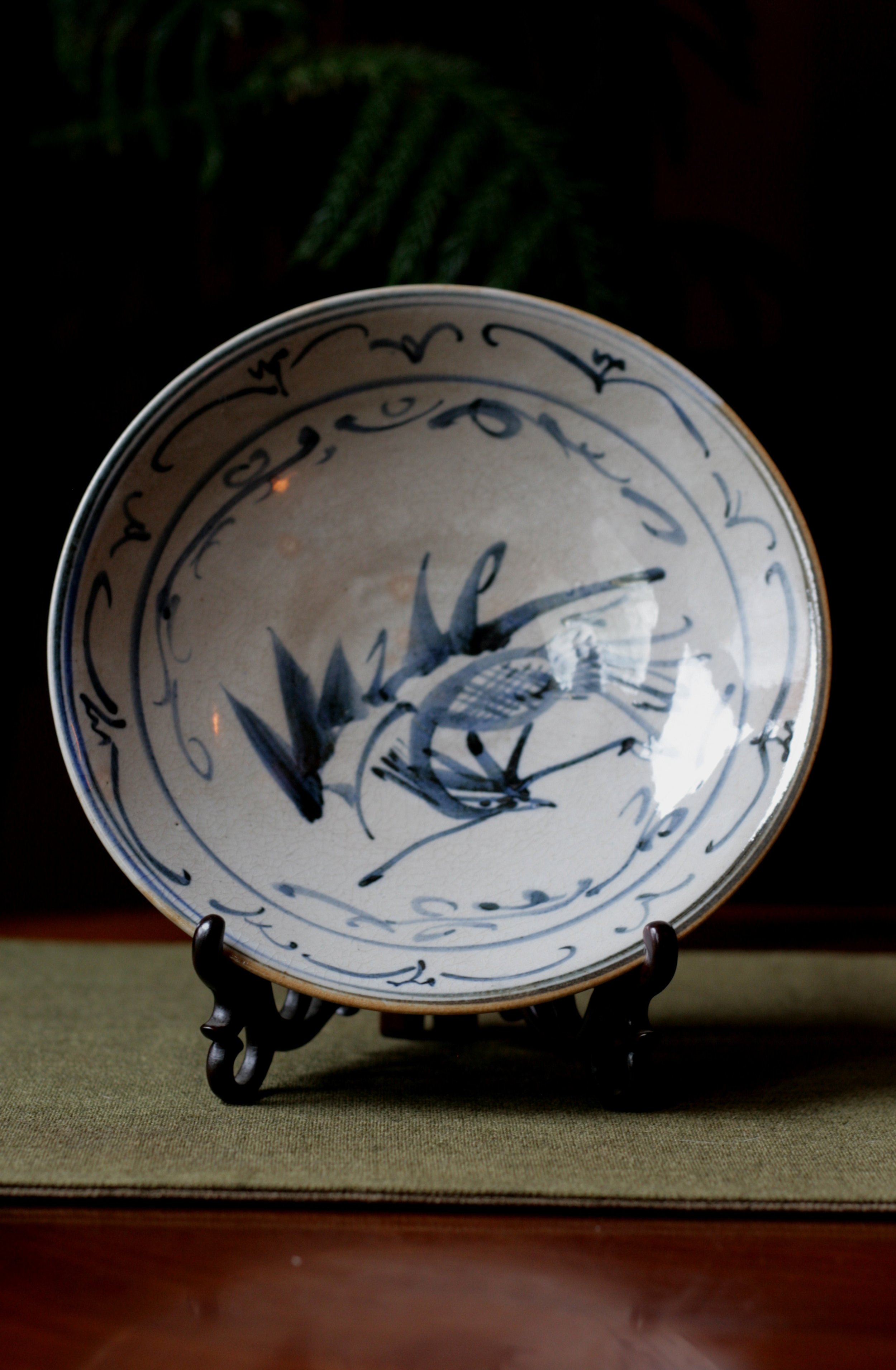 Image 1 of 6
Image 1 of 6

 Image 2 of 6
Image 2 of 6

 Image 3 of 6
Image 3 of 6

 Image 4 of 6
Image 4 of 6

 Image 5 of 6
Image 5 of 6

 Image 6 of 6
Image 6 of 6







Antique Chinese porcelain plate with bird motif (22)
Antique Chinese porcelain plate with blue and white bird motif. 19.5cm x 19.5cm x 4cm.
Qinghua – This is a general term used to describe Chinese blue & white porcelain wares created using underglaze painting in cobalt oxide with a transparent overglaze. This technique was first widely popularized in China in the 14th century During the Yuan Dynasty, although examples from as early as the Tang Dynasty exist. The Yuan Dynasty was established in 1271 by the Mongols which had already conquered much of the Middle East. It is theorized that the interaction between the aesthetics of the Mongols and central Asian tribes, the resource of cobalt sourced from Persia, and the ceramic traditions of the Chinese, came together to create what would become the most renowned ceramic tradition of the world, i.e. Chinese underglaze blue & white porcelain. Jingdezhen kilns created their first blue & white ware, for which it would become legend, in the 14th century under the Wenzong emperor. This was the beginning of an industry that would transform ceramics around the world. The tradition of blue & white porcelain continued to grow during the Ming Dynasty and reached its zenith of technical perfection during the Qing Dynasty.
Antique Chinese porcelain plate with blue and white bird motif. 19.5cm x 19.5cm x 4cm.
Qinghua – This is a general term used to describe Chinese blue & white porcelain wares created using underglaze painting in cobalt oxide with a transparent overglaze. This technique was first widely popularized in China in the 14th century During the Yuan Dynasty, although examples from as early as the Tang Dynasty exist. The Yuan Dynasty was established in 1271 by the Mongols which had already conquered much of the Middle East. It is theorized that the interaction between the aesthetics of the Mongols and central Asian tribes, the resource of cobalt sourced from Persia, and the ceramic traditions of the Chinese, came together to create what would become the most renowned ceramic tradition of the world, i.e. Chinese underglaze blue & white porcelain. Jingdezhen kilns created their first blue & white ware, for which it would become legend, in the 14th century under the Wenzong emperor. This was the beginning of an industry that would transform ceramics around the world. The tradition of blue & white porcelain continued to grow during the Ming Dynasty and reached its zenith of technical perfection during the Qing Dynasty.